Nos últimos anos, graças ao rápido desenvolvimento de novas tecnologias, como tecnologia de comunicação IoT e inteligência artificial, os produtos domésticos inteligentes passaram pelos três estágios de automação, inteligência e IoT, e entraram na era da inteligência de toda a casa. Gigantes das comunicações, Internet, eletrodomésticos, móveis domésticos, imóveis e outras indústrias lançaram estratégias de casa inteligente e ecologia de produtos definidos. A concorrência de mercado é extremamente acirrada.
Em junho de 2021, o instituto de pesquisa IDC lançou o "Relatório de acompanhamento trimestral do mercado de dispositivos domésticos inteligentes da China". O relatório mostra que, no primeiro trimestre de 2021, o mercado de dispositivos domésticos inteligentes da China vendeu 46,99 milhões de unidades, um crescimento ano a ano de 27,7%.
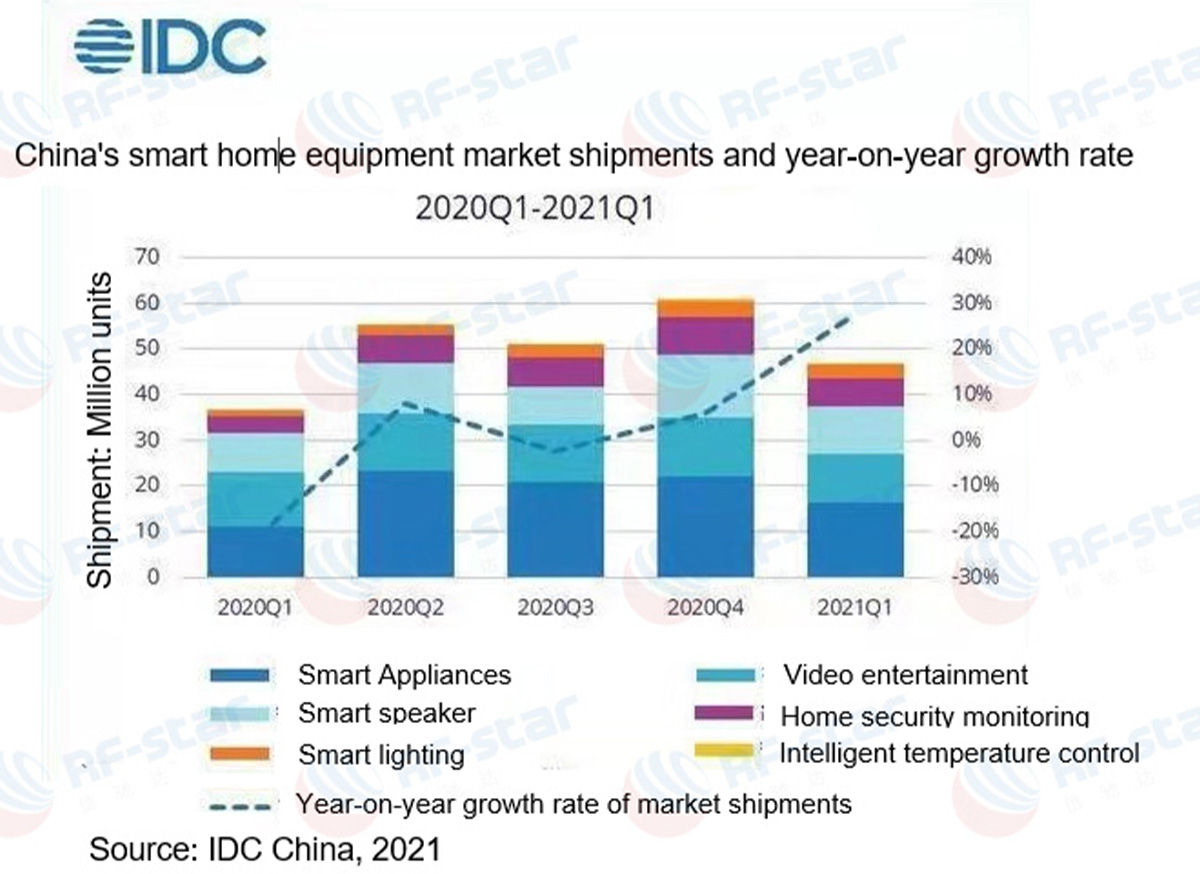
No mercado doméstico inteligente, a Apple entrou no mercado mais cedo com a plataforma HomeKit, estabeleceu uma ecologia mais madura e se tornou o principal player no mercado doméstico inteligente. Baseando-se no sistema iOS para aumentar ainda mais a aderência dos usuários da Apple, a plataforma doméstica inteligente HomeKit construiu um ecossistema completo de inteligência de toda a casa por meio de gerenciamento centralizado e operação inteligente.

1. O HomeKit cria uma ecologia doméstica inteligente para os fãs da Apple
A Apple lançou o HomeKit, uma plataforma doméstica inteligente, em 2014. Em 2015, foi lançado o primeiro lote de produtos domésticos inteligentes HomeKit, que podem controlar a iluminação, a temperatura interna e outros aparelhos elétricos por meio do iPhone, iPad ou iPod Touch. Como a própria Apple não produz hardware HomeKit, o HomeKit é apenas um protocolo de certificação; portanto, os fabricantes estão gradualmente apoiando o protocolo HomeKit.

Desde o lançamento do iOS 10, as pessoas podem usar o aplicativo "Home" adicionado ao sistema iOS para gerenciar e controlar dispositivos domésticos inteligentes que suportam a estrutura HomeKit.
1.1. Gestão centralizada "Casa"
HomeKit supports centralized management of devices on the "Home" APP, and no other APP is required for each smart device. However, judging from the products released on the market that support the HomeKit protocol, each product still has its own APP launched by the manufacturer to increase customer retention. The settings in the supporting APP are usually more abundant than the functions in the Home APP. For example, Aqara's smart sockets, detailed power consumption curves and statistics can be seen in the original APP.
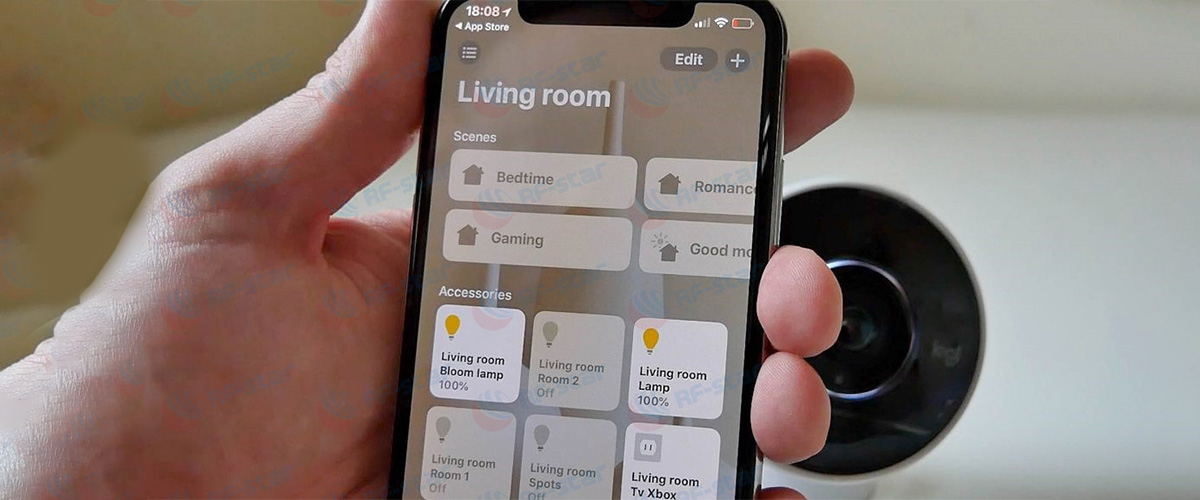
The "Home" APP covers four parts: accessories, scenes, rooms, and automation.
(1) The concept of an accessory is well understood, which means that a single smart device is added to the APP.
(2) Scene refers to the unified state of multiple devices into corresponding states at a certain moment. For example, the lunch break scene will contain closed curtains and closed lights.
(3) The rooms are classified according to space to facilitate the unified management of multiple devices.
(4) Automation is to set some conditions to trigger automatic execution of commands. Automation can actually be understood as a scene triggered by a specific condition, such as a “get up” scene triggered by time.
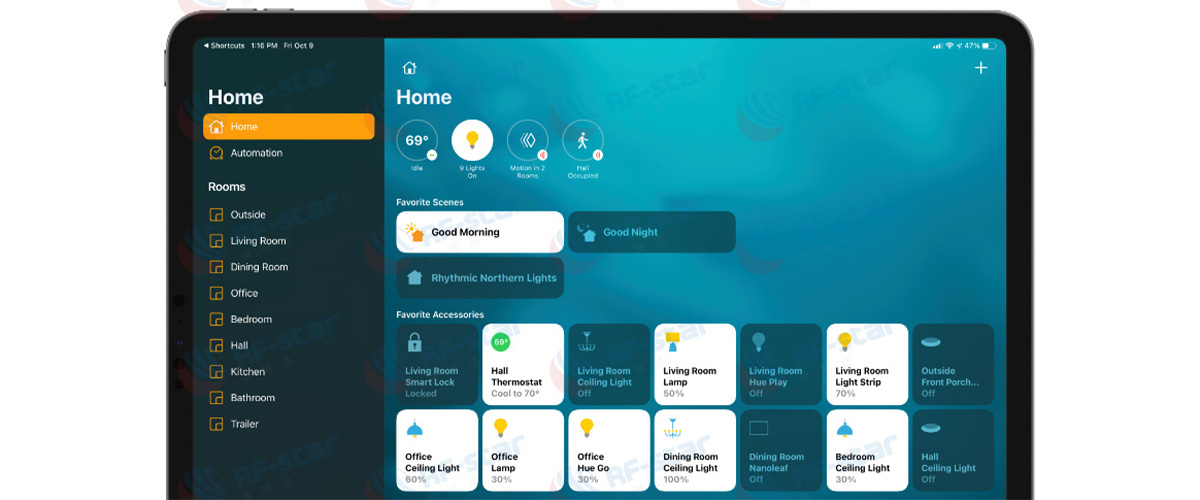
1.2. HomeKit intelligent operation
Switch control
APP control
Voice control
Automatic linkage
2. HomeKit annex protocol adds support for Thread
In November 2020, Apple released the extended specification of the HomeKit annex protocol to MFi plan members, adding support for Thread as an additional connection option.
After the HomeKit annex protocol newly support for Thread, it provides new marketing opportunities for customers who choose Nordic chips, such as nRF52811, nRF52820, nRF52833, nRF52840, and the latest chip nRF5340. Both Nordic software and hardware support the extended HomeKit with Thread and Bluetooth low energy.
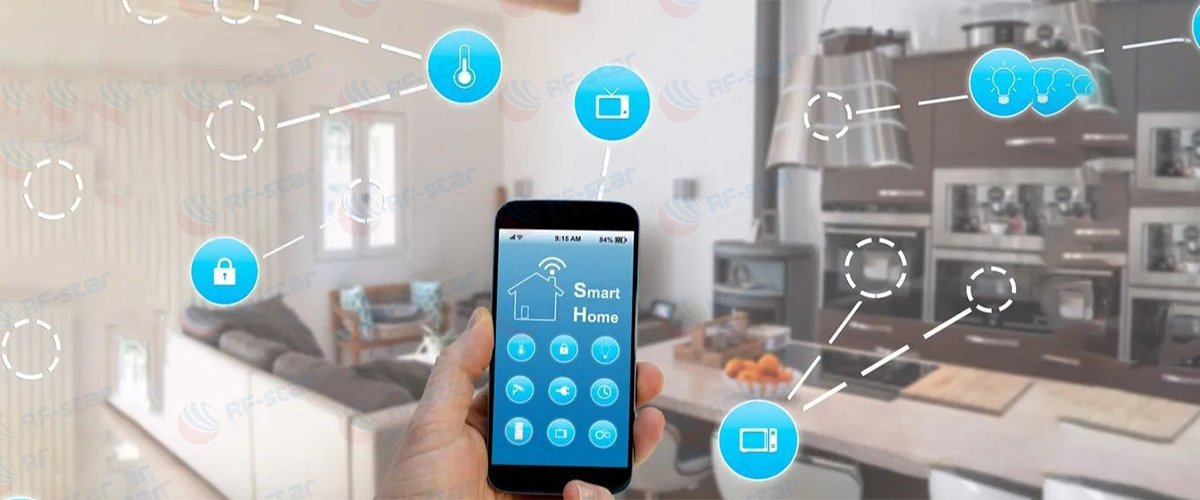
HomeKit devices connect to the HomeKit via Wi-Fi and Bluetooth:
Wi-Fi is used for the communication with high-bandwidth, low-latency and powered by the main power.
Bluetooth Low Energy is used for low-bandwidth, low-power connections.
Now HomeKit newly support for Thread, there will be an additional wireless connection option.
2.1.Thread network protocol
Thread is a low-power wireless mesh networking protocol designed for easy integration in the connected home.

Google’ Nest launched Thread, an IPv6-based networking protocol for devices to communicate on a network. Thread can support the easily and securely connection of more than 250 devices into a low-power, wireless mesh network at the same time, covering all light bulbs, switches, sensors and smart devices in the home, which is greatly optimizing power consumption.
In addition, Thread runs on the same IEEE 802.15.4 MAC and PHY, it means Thread can use the same chip which support ZigBee. The chips only need to update the software to be compatible with Thread. Use Internet-recognized open standards to create an IPv6-based mesh network. Therefore, Thread devices can be seamlessly integrated with larger IP networks and do not require proprietary gateways or converters.
In order to accelerate the popularization of thread protocol, Nest Labs, Qualcomm, Intel, Samsung, ARM, NXP, Freescale, and Silicon Labs and other companies formed the "thread group" alliance in July 2014 to promote thread to become an industry standard and provide thread product certification service to the member enterprises.
2.2. HomeKit brings more choices to smart homes
Now, HomeKit brings more choices to smart homes and lowers the threshold for people to expand smart home networks by adding new devices. The mesh network function of Thread allows users to expand the scope of the home network more easily.


2.3. Nordic hardware is suitable for HomeKit accessories
Customers who use Nordic for products will benefit from the new HomeKit version. These Bluetooth modules released by RF-star technology support concurrent operation of Thread and Bluetooth Low Energy, most have abundant memory, making them ideal for building HomeKit accessories:
a)RF-BM-ND05, RF-BM-ND05I and RF-BM-ND06 based on nRF52840
b)RF-BM-ND07 based on nRF52833
c)RF-BM-ND04A, RF-BM-ND08A based on nRF52811
d)The subsequent nRF5340 modules that will be launched later
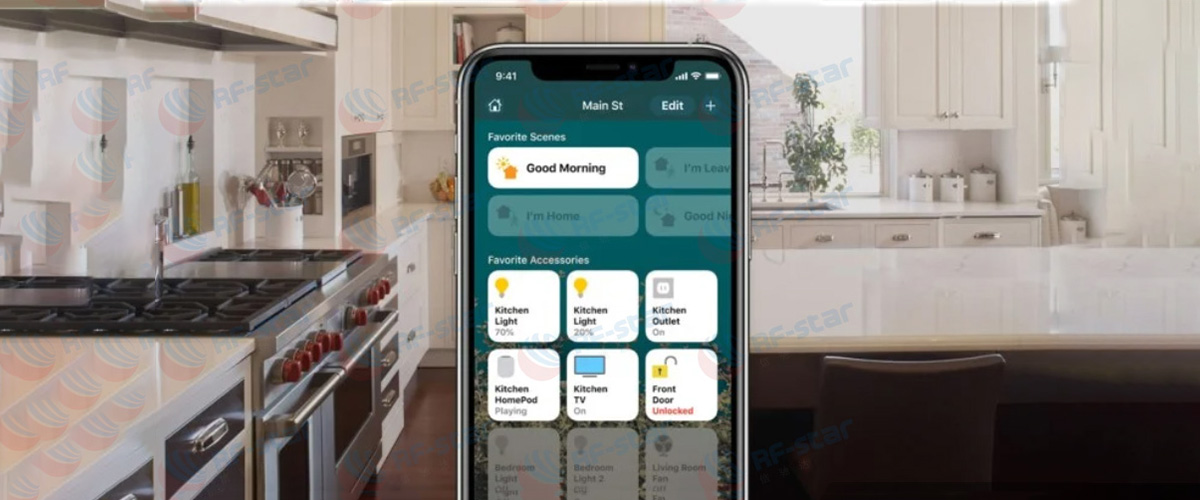
2.4. Thread accelerates the Internet of Things (IoT)
Based on Thread's low power consumption and IP-based characteristics, it forms an advantage in achieving seamless interconnection between the IoT and the networks. It not only provides effective communication between low-cost, battery-powered devices, but also provides a simple interface to the cloud and mobile devices.
Moreover, the open and standards-based Thread protocol is conducive to cross-vendor operations among IoT devices. This undoubtedly provides powerful conditions for the large-scale expansion of the Internet of Things at the industrial or household level. And Thread abandons some of the complexity of previous mesh network standards, and only has two different node types: Router Eligible node and End Device node.
3. HomeKit will build a new ecology of smart home
The standards of the IoT should be more simplified to cope with the massive outbreaks in the future. After the launch of HomeKit, relying on a unified management platform and rich wireless connection methods, it has provided a more complete ecology for the whole house smart solution. HomeKit uses the newly supported Thread's powerful mesh network technology to provide more Thread-certified solutions in the future. Obviously, it will play a key role in accelerating the integration and automation of the Internet of Things in smart homes. Supporting the Thread protocol Nordic application solutions will have obvious advantages in the smart home market and will change the existing ecology of smart homes.